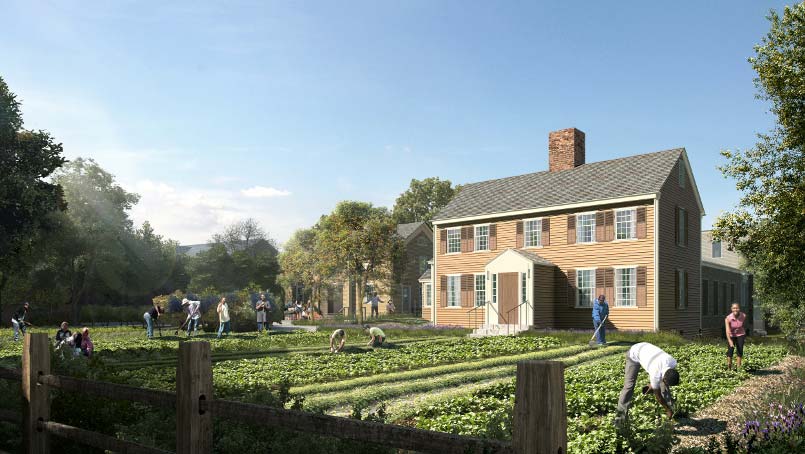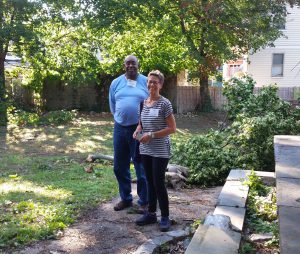
March 15, 2017 Article 89 at the Fowler Clark Epstein Farm
Barbara Knecht, R.A., is the Urban Farming Institute’s Project Leader for Farm Site development. She has worked in, on and for cities for more than thirty years. Her work has included development projects in the public and private sector as well as research, publications, education and advocacy. In the 1980’s, Ms. Knecht worked for the New York City Mayor’s office and several city agencies where she managed design and development of several thousand units of affordable housing from site selection and land acquisition through occupancy; In the 1990’s, she continued her development work in the not-for-profit sector, adding planning, research, evaluation and training projects. During the past decade, Barbara was the consulting Director of Design at the Institute for Human Centered Design in Boston and the co-director of IHP Cities in the 21st Century. She is currently a collaborator in Strategies for Cities where she works on policy and land use for urban farming in Boston. Ms. Knecht is based in Boston and New York where she is a licensed architect.
 When I tell people I develop farms in the midst of the city, reaction ranges from quizzical look to raised eyebrow to wide grin. That’s a great feeling. I manage the development of farms for the Urban Farming Institute of Boston. Among our projects is the transformation of the historic Fowler Clark Epstein Farm in Mattapan in partnership with Historic Boston Inc. and The Trust for Public Land.
When I tell people I develop farms in the midst of the city, reaction ranges from quizzical look to raised eyebrow to wide grin. That’s a great feeling. I manage the development of farms for the Urban Farming Institute of Boston. Among our projects is the transformation of the historic Fowler Clark Epstein Farm in Mattapan in partnership with Historic Boston Inc. and The Trust for Public Land.
At the end of 2013, the City of Boston enacted a zoning resolution known as Article 89 that regularized the use of urban land for farms. While most people have become accustomed to Community Gardens – garden plots shared by neighbors to grow food for their own use – urban farming is a growing national movement to produce food for market in the city. Driven by a desire for locally grown fresh food, a more resilient food system, and new kinds of jobs, 21st century urban farming is sprouting roots in cities across the country.
The significance of the City’s zoning change is that it normalizes farming in the city. Before the resolution, any farm was required to undergo a variance process which, by definition, says this is an unusual, special, one time approval for a specific property. Article 89 effectively says, urban farms, like houses and stores, are a known use and we allow them “as of right” as long as they meet certain criteria. And that right is allowed in perpetuity.
Article 89 is just one of many initiatives that have raised the profile of urban farming in Boston, by declaring urban farming an enterprise worthy of investment. When Historic Boston was investigating options for reuse of the property surrounding the historic house and barn at the Fowler Clark Epstein site, the growing profile of urban farming brought the two organizations together to see the potential of creating an urban farming training center, teaching kitchen, classroom, offices and food hub. Neighbors and donors alike have been intrigued and excited by the prospect of supporting this brand new re-use.
The zoning ordinance, while it never contemplated the unique situation of an historic farm, has enough flexibility to provide sound guidance for the planning and design of the site. Article 89 was produced over the course of two years by a working group of farmers, gardeners, planners, city officials and other experts, guided by numerous public hearings and discussions so that it anticipates the particular differences between rural and urban farms. It offers sensible guidance for handling compost, fencing, screening, information signs, water supply and runoff, as well as farm stands, sheds and greenhouses, all to make sure farms enhance neighborhoods and help make Boston a more resilient city.
At the Fowler Clark Epstein Farm, most of the growing beds will be in front of the buildings visible from Norfolk street, creating a compact version of the larger farm it once was. Behind the farmhouse and barn will be a smaller array of growing beds and a greenhouse at the street edge. Bio-retention basins, also known as rain gardens, are a natural part of the rain water management system? Besides the food grown in the annual beds and through the year in the greenhouse, all of the landscaping – trees and bushes used for human comfort, visual screening and soil management will be varieties producing edible fruits and berries. Article 89 is the kind of regulation that has encouraged this abundance by offering a strong base within which to think innovatively about growing food in the city.



